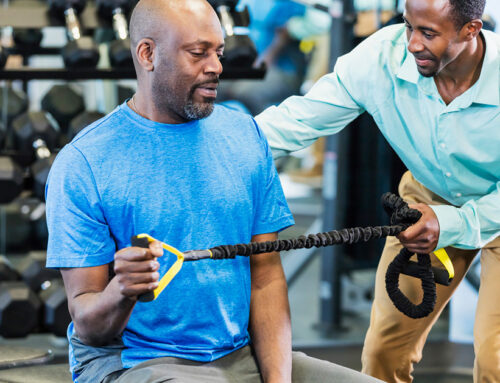Tired of Nagging Neck Pain? A Guide to Causes, Treatment & Prevention
Neck pain is one of the most common conditions we treat at Burlington Sports Therapy, and for good reason—it affects people of all ages, from athletes to desk workers, students to retirees. Whether it’s from an injury like whiplash or something more gradual like poor posture or stress, neck pain can quickly disrupt your daily life. In this blog entry, we’ll help you understand the difference between acute and chronic neck pain, explore common causes, and offer practical advice for treatment and prevention—including when to seek help from a chiropractor or physiotherapist in Burlington, Ontario.
Acute vs. Chronic Neck Pain: What’s the Difference?
One of the first distinctions to make is whether your pain is acute or chronic. This refers to duration, not severity. Acute neck pain comes on suddenly and typically lasts a few days to a few weeks. It often stems from a traumatic event like a motor vehicle accident (e.g., whiplash), a sports injury, after sleeping in an awkward position or after a sudden movement. Chronic neck pain is pain that has lasted more than 6–8 weeks. It may have started with an acute injury, or it may develop gradually over time due to posture, repetitive strain, or stress.
Chronic neck pain may be related to tissue “damage”, but odd as this may seem, it might just be related to nervous system sensitization, postural habits, and stress. That’s why the approach to managing chronic neck pain does not revolve around rest or medication but rather a realistic understanding of why the pain is persisting, the factors that are involved and how to change the course of your chronic neck pain.
Common Causes of Chronic Neck Pain
At our chiropractic and physiotherapy clinic in Burlington, we see several recurring patterns that lead to long-standing neck discomfort. Perhaps the most common is neck pain attributed to sustained postures in front of devices. Spending hours at a computer or staring down at your phone (sometimes called “tech neck”) can irritate tissues and lead to pain. Thankfully, it’s unlikely that this will damage your neck, but it certainly can play a role in irritating it. This ties into another factor related to neck pain; sensitization. After an injury, your body can become more sensitive to certain stimuli—even something as simple as turning your head or sitting for long periods. This doesn’t mean there’s new damage; it’s just the nervous system interpreting signals differently. Mental & emotional stress can intertwine with this. Mental stress can increase muscle tension—especially in the neck and shoulders. Over time, this can lead to persistent discomfort even if there’s no injury.

When Neck Pain Might Be Serious
While most neck pain is mechanical and treatable with chiropractic or physiotherapy, some signs require immediate attention. Persistent headaches, numbness or tingling in the arms or hands, weakness in the limbs, pain radiating down the arm and loss of balance or coordination. Although this list is not exhaustive, you should seek advice right away if you are experiencing any of these symptoms.
What You Can Do About Neck Pain (And How We Help)
At Burlington Sports Therapy, we often focus on three main pillars when helping patients with chronic neck pain: movement, strength, and smart daily choices.
-
Maintain Your Neck’s Range of Motion
Your neck is designed to move in multiple directions—forward, backward, side-to-side, and rotation. If you stop moving it (because of pain or fear), you’ll begin to lose mobility, making the issue worse. Common movement limitations we see include reduced rotation (turning your head)—often noticed when checking your blind spot while driving and reduced lateral flexion (tilting your head side to side)—a frequently forgotten motion. At our Burlington chiropractic and physiotherapy clinic, we guide patients through safe, effective mobility exercises to restore range of motion and reduce stiffness. Maintaining this mobility after your pain has dissipated is essential to a long, functional, healthy lifestyle.

-
Build Strength and Resilience
When someone injures their lower back, most people expect to follow a core strengthening program. But when it comes to the cervical spine, strengthening is often overlooked. Your neck is part of your spine, and it needs to be strong too. Strengthening your neck will help to improve stability, increase muscular endurance, which helps with posture, reduce the risk of future flare-ups and help your neck tolerate daily demands—whether you’re an athlete or office worker. Using progressive exercises that work the neck in all directions, we help you safely build strength and confidence in your movement.
-
Make Better Everyday Choices
Even the strongest neck can become irritated if daily habits are working against it. During treatment, it’s important to identify habits (including postures) that tend to irritate that person’s neck. This will be very individual. For some people, certain exercises in the gym aggravate their neck. For others, it’s their pillow or their workstation. For new parents, it could be the way you hold your child. The key is identifying those aggravating factors and modifying or temporarily removing them until the pain dissipates. Some tips include adjusting your workstation ergonomics, using a supportive pillow, avoiding sleeping on your stomach, avoiding prolonged phone use in a head-down position and incorporating micro-breaks into your day to reduce muscle fatigue. You can also explore stress-reducing activities like walking, meditation, or breathing exercises. In short, making better daily choices can be the difference between recurring pain and lasting relief.
When to See a Chiropractor or Physiotherapist in Burlington
If your neck pain has lasted more than a few weeks, or if it keeps coming back, don’t wait—get it checked out. At Burlington Sports Therapy, our team of experienced chiropractors and physiotherapists work together to provide comprehensive assessments of your neck and spine. We provide personalized treatment approaches that might include a combination of different modalities such as hands-on therapy, including joint mobilizations, soft tissue work, and dry needling (when appropriate), active release and Graston technique. That component of care depends on a person’s diagnosis, history and comfort level with treatment. Of utmost importance is a customized exercise program for strength and mobility, as well as education and advice tailored to your lifestyle and goals. At Burlington Sports Therapy, we use an evidence-based, patient-centered approach to get you moving better, feeling stronger, and staying pain-free—without unnecessary interventions or one-size-fits-all protocols.
If you’re tired of dealing with nagging neck pain or you’ve had an injury that hasn’t fully resolved, it’s time to get expert help. Book an appointment today with our chiropractic and physiotherapy team in Burlington, Ontario, so that we can assist you in feeling better and keeping it that way!
Burlington Sports Therapy – 905-220-7858








